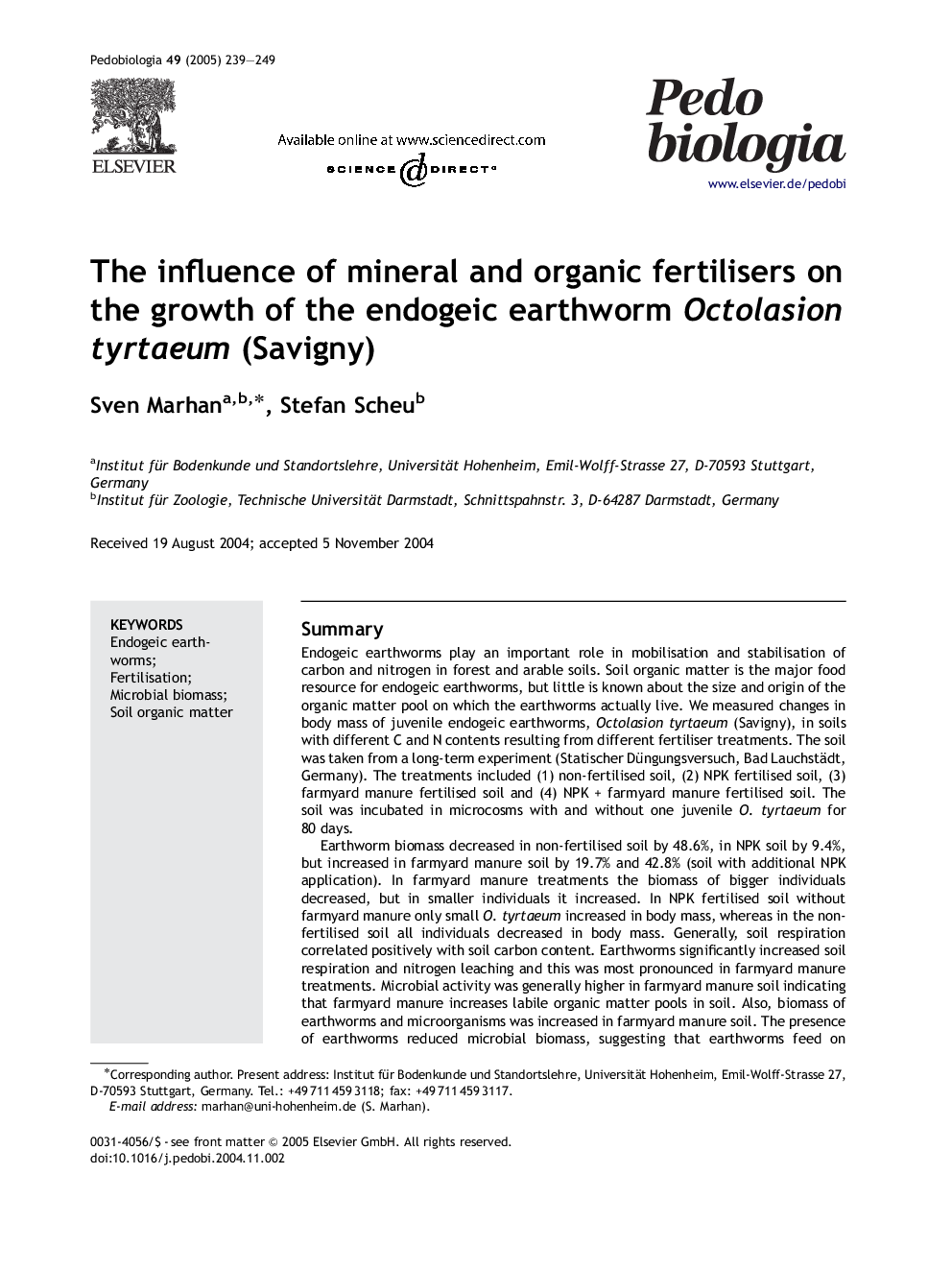| Article ID | Journal | Published Year | Pages | File Type |
|---|---|---|---|---|
| 10878747 | Pedobiologia | 2005 | 11 Pages |
Abstract
Earthworm biomass decreased in non-fertilised soil by 48.6%, in NPK soil by 9.4%, but increased in farmyard manure soil by 19.7% and 42.8% (soil with additional NPK application). In farmyard manure treatments the biomass of bigger individuals decreased, but in smaller individuals it increased. In NPK fertilised soil without farmyard manure only small O. tyrtaeum increased in body mass, whereas in the non-fertilised soil all individuals decreased in body mass. Generally, soil respiration correlated positively with soil carbon content. Earthworms significantly increased soil respiration and nitrogen leaching and this was most pronounced in farmyard manure treatments. Microbial activity was generally higher in farmyard manure soil indicating that farmyard manure increases labile organic matter pools in soil. Also, biomass of earthworms and microorganisms was increased in farmyard manure soil. The presence of earthworms reduced microbial biomass, suggesting that earthworms feed on microorganisms or/and that earthworms and soil microorganisms competed for similar organic matter pools in soil. The results demonstrate that NPK fertilisation only is insufficient to sustain O. tyrtaeum, whereas long-term fertilisation with farmyard manure enables survival of endogeic species due to an increased pool of utilisable soil organic matter in arable soil.
Related Topics
Life Sciences
Agricultural and Biological Sciences
Animal Science and Zoology
Authors
Sven Marhan, Stefan Scheu,
